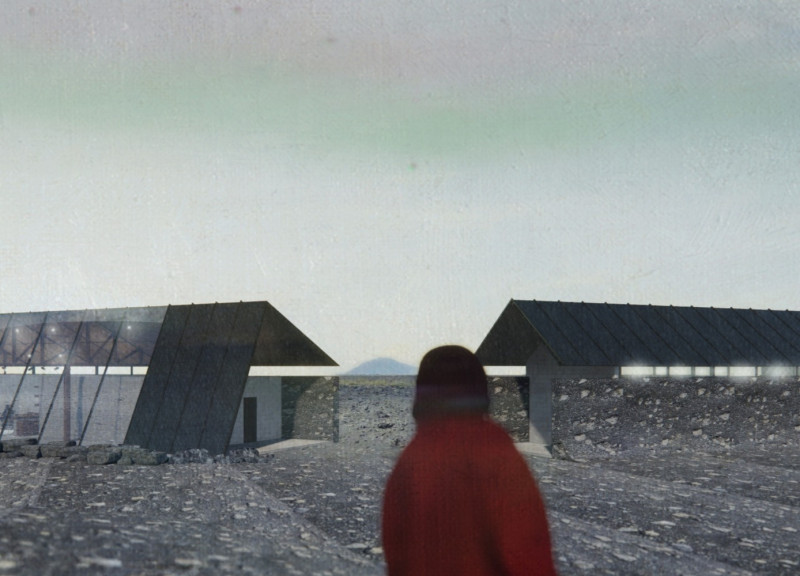5 key facts about this project
The visitor center at the foot of Hverfjall Volcano in Iceland is designed to support the experiences of tourists exploring the volcanic landscape. This project serves as an integral facility, providing essential services such as an information center and a coffee shop, while prioritizing sustainability and environmental integration. The architectural design emphasizes a seamless blend with the surrounding terrain, facilitating a connection between visitors and the natural environment.
Design Philosophy and Materiality
The design concept focuses on integration with the natural landscape, minimizing visual intrusion. The building features two distinct masses that serve different functions while maintaining a visual link. The use of local soil and stone forms a thick wall, grounding the structure in its volcanic context. This choice of material not only emphasizes sustainability but also reflects the geological characteristics of the site. Concrete masonry units are utilized for internal partitions, allowing for adaptive space use. Timber trusses support the roof structure, bringing warmth and a light aesthetic, while metal roof panels ensure durability against harsh weather. Large, double-glazed windows are strategically placed to provide ample natural light and frame views of Hverfjall Volcano, enhancing the visitor experience.
Functional Spaces
The interior layout is designed to optimize visitor flow and comfort. Key areas include the coffee shop, information kiosk, and various exhibition spaces. The arrangement provides clear zoning, separating public functions from service areas. The effective use of space accommodates educational presentations on the volcanic region, and the coffee shop serves as a social hub for visitors. Operable windows encourage natural ventilation and further integrate the indoor environment with the exterior climate.
Unique Architectural Approaches
This project’s unique approach lies in its commitment to disappearing architecture. By carefully selecting local materials and crafting a structure that follows the topography, the building minimizes its visual footprint while encouraging visitors to engage with their surroundings. The architectural design employs energy-efficient strategies that reduce reliance on mechanical heating and cooling systems. Additionally, the project enhances visitor engagement by promoting immersive experiences that celebrate the natural site and its geological features.
The visitor center at Hverfjall Volcano in Iceland sets a benchmark for maintaining environmental integrity within architectural projects. To explore the architectural plans, architectural sections, and detailed architectural designs in greater depth, readers are encouraged to examine the project presentation for further insights.





















































